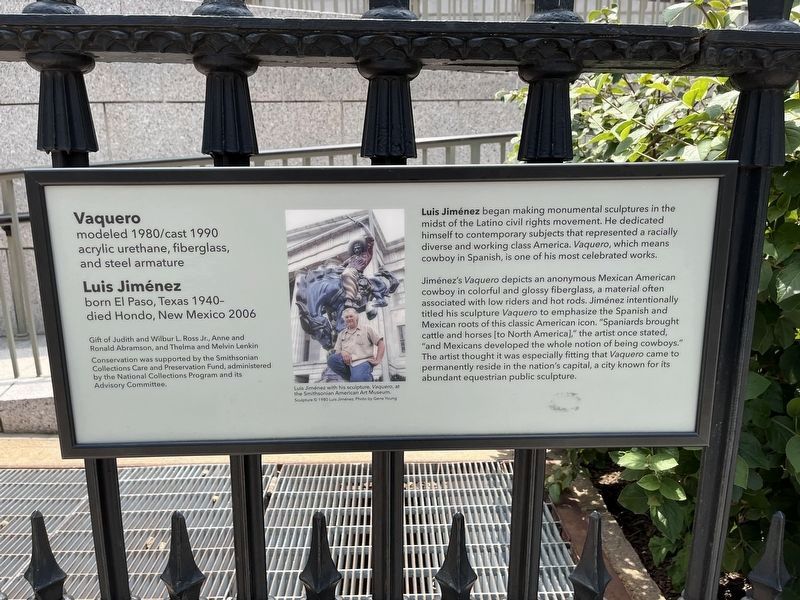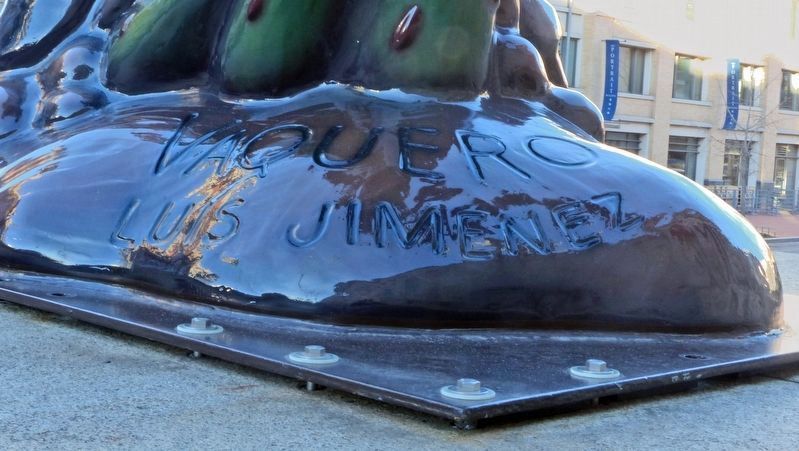Penn Quarter in Northwest Washington in Washington, District of Columbia — The American Northeast (Mid-Atlantic)
Vaquero
modeled 1980/cast 1990
— acrylic urethane, fiberglass, and steel armature —
Luis Jiménez began making monumental sculptures in the midst of the Latino civil rights movement. He dedicated himself to contemporary subjects that represented a racially diverse and working class America. Vaquero, which means cowboy in Spanish, is one of his most celebrated works.
Jiménez's Vaquero depicts an anonymous Mexican American cowboy in colorful and glossy fiberglass, a material often associated with low riders and hot rods. Jiménez intentionally titled his sculpture Vaquero to emphasize the Spanish and Mexican roots of the classic American icon. "Spaniards brought cattle and horses [to North America]," the artist once stated, "and Mexicans developed the whole notion of being cowboys." The artists thought it was especially fitting that Vaquero came to permanently reside in the nation's capital, a city known for its abundant equestrian public sculpture.
Caption:
Luis Jiménez with his sculpture, Vaquero, at the Smithsonian American Art Museum.
Sculpture ©1980 Luis Jiménez. Photo by Gene Young.
[Additional artwork information on plaque:]
Vaquero
modeled 1980/cast 1990
acrylic urethane, fiberglass,
and steel armature
Luis Jiménez
born El Paso, Texas 1940-
died Hondo, New Mexico 2006
Gift of Judith and Wilbur L. Ross Jr., Anne and Ronald Abramson, and Thelma and Melvin Lenkin
Conservation was supported by the Smithsonian Collections Care and Preservation Fund, administered by the National Collections Program and its Advisory Committee.
Erected by Smithsonian Institution.
Topics. This historical marker is listed in these topic lists: Animals • Arts, Letters, Music • Hispanic Americans. A significant historical year for this entry is 1980.
Location. 38° 53.902′ N, 77° 1.396′ W. Marker is in Northwest Washington in Washington, District of Columbia. It is in the Penn Quarter. Marker is on G Street Northwest just west of 8th Street Northwest, on the left when traveling west. The marker hangs on the north gate around the National Portrait Gallery. Touch for map. Marker is at or near this postal address: 600 7th Street Northwest, Washington DC 20004, United States of America. Touch for directions.
Other nearby markers. At least 8 other markers are within walking distance of this marker. Discover DC / Gallery Place (within shouting distance of this marker); Roy Lichtenstein (about 400 feet away, measured in a direct line); Man with Briefcase (about 400 feet away); a different marker also named Roy Lichtenstein (about 400 feet away); Patent Office Building (about 400 feet away); Abraham Lincoln Walked Here
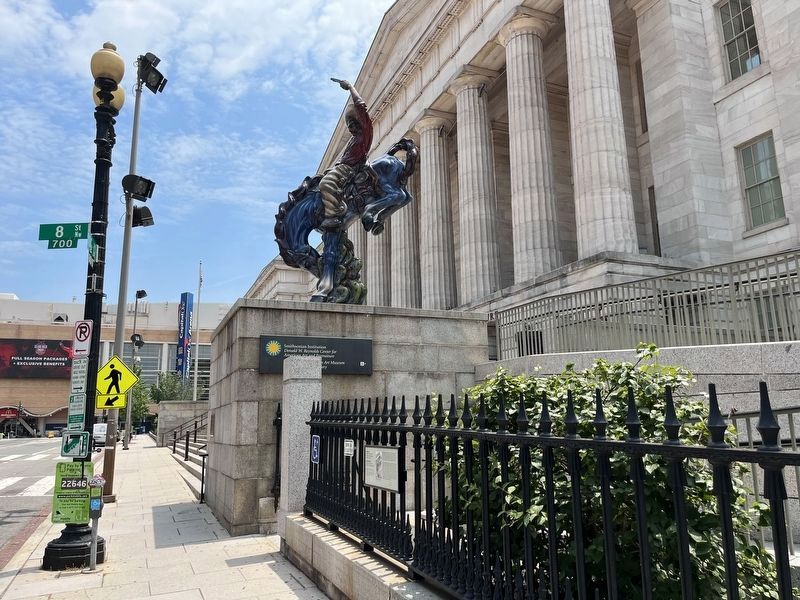
Photographed By Devry Becker Jones (CC0), June 22, 2022
2. Vaquero Marker with the Vaquero statue visible in the background
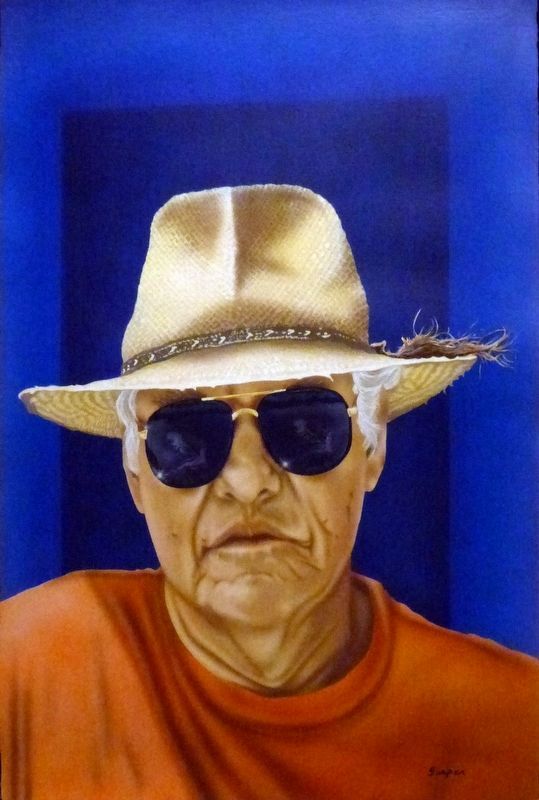
Photographed By Allen C. Browne, December 12, 2017
3. Luis Jiménez
This airbrushed acrylic painting of Luis Jiménez (1940-2006) by Gaspar Enrique hangs inside the National Portrait Gallery in Washington, DC.
“Luis Jiménez's large-scale fiberglass sculptures of mustangs, dancers, and howling coyotes have become familiar sights in public spaces across the United States. An internationally recognized artist, Jimenez put his stamp on Pop art by infusing his playful critique of American society with the history and myths of his native Southwest. His blazing Vaquero, installed outside this building, offers a reinvention of equestrian sculpture that draws attention to the Hispanic origins of the American cowboy. The sculpture has been a signature work of the Smithsonian since it was acquired in the 1980s.
Born in the U.S.-Mexico borderland in Texas, Jimenez learned how to spray paint and weld while working at his father's neon shop. Without formal training, he moved to New York City in the 19605, where the art world took notice of his talent.
Chicano portraitist Gaspar Enriquez, a friend of Jimenez, made this diptych a few years before Jimenez died in a studio accident.” -- National Portrait Gallery
“Luis Jiménez's large-scale fiberglass sculptures of mustangs, dancers, and howling coyotes have become familiar sights in public spaces across the United States. An internationally recognized artist, Jimenez put his stamp on Pop art by infusing his playful critique of American society with the history and myths of his native Southwest. His blazing Vaquero, installed outside this building, offers a reinvention of equestrian sculpture that draws attention to the Hispanic origins of the American cowboy. The sculpture has been a signature work of the Smithsonian since it was acquired in the 1980s.
Born in the U.S.-Mexico borderland in Texas, Jimenez learned how to spray paint and weld while working at his father's neon shop. Without formal training, he moved to New York City in the 19605, where the art world took notice of his talent.
Chicano portraitist Gaspar Enriquez, a friend of Jimenez, made this diptych a few years before Jimenez died in a studio accident.” -- National Portrait Gallery
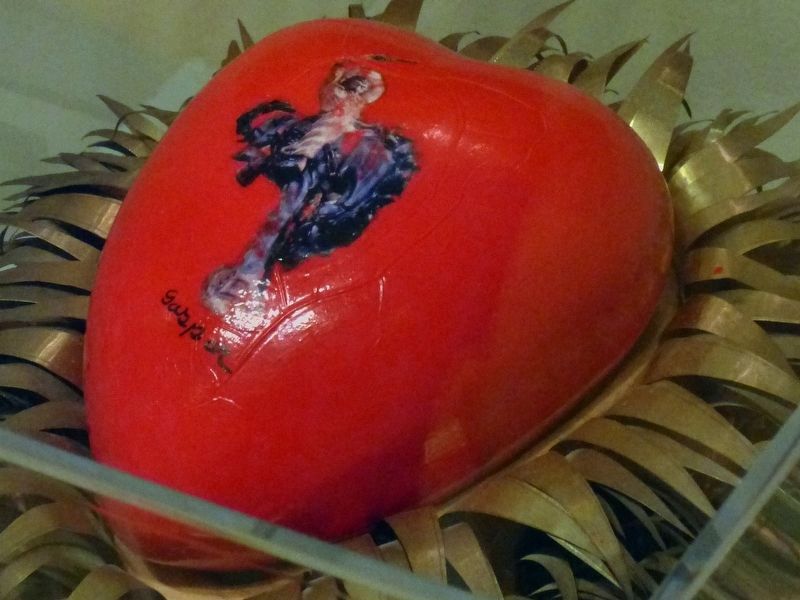
Photographed By Allen C. Browne, December 12, 2017
4. Corazón de Luis
“This ceramic heart is integral to Gaspar Enrequez's portrayal of his friend Luis Jimenez. Forming a diptych, the acrylic airbrushed likeness Luis Jimenez and El Corazón de Luis (The Heart of Luis), are meant to be shown together. At the center of the heart, one can see an image of Jimenez's iconic Vaquero.
The raised lines on the heart's surface occurred by accident, specifically from wet paint reacting to heat. Upon recognizing the similarities between the lines and the veins of a heart, the artist embraced this chance event as part of the process. (Enriquez recently made this heart to replace the original one, which was damaged.” -- National Portrait Gallery
The raised lines on the heart's surface occurred by accident, specifically from wet paint reacting to heat. Upon recognizing the similarities between the lines and the veins of a heart, the artist embraced this chance event as part of the process. (Enriquez recently made this heart to replace the original one, which was damaged.” -- National Portrait Gallery
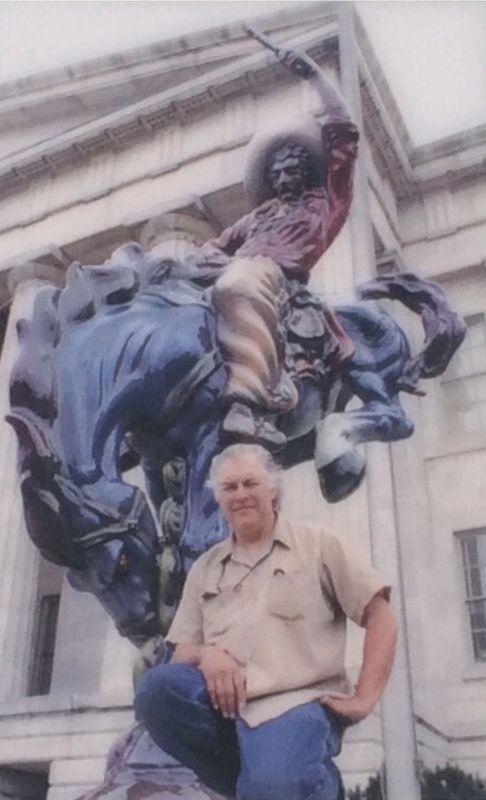
Photographed By Devry Becker Jones (CC0)
6. Closeup of image on the marker
Luis Jiménez with his sculpture, Vaquero, at the Smithsonian American Art Museum.
Sculpture ©1980 Luis Jiménez. Photo by Gene Young.
Sculpture ©1980 Luis Jiménez. Photo by Gene Young.
Credits. This page was last revised on January 30, 2023. It was originally submitted on January 23, 2018, by Devry Becker Jones of Washington, District of Columbia. This page has been viewed 552 times since then and 73 times this year. Photos: 1, 2. submitted on June 22, 2022, by Devry Becker Jones of Washington, District of Columbia. 3, 4. submitted on February 2, 2019, by Allen C. Browne of Silver Spring, Maryland. 5. submitted on February 4, 2019, by Allen C. Browne of Silver Spring, Maryland. 6. submitted on January 23, 2018, by Devry Becker Jones of Washington, District of Columbia. • Bill Pfingsten was the editor who published this page.
